A Christmas Cactus is a beautiful houseplant that blooms indoors and is a popular decoration in the winter holidays. You will appreciate its beauty once the blooms grow. This plant loves cold and darkness to bloom. So, when should you keep the Christmas cactus in the dark to bloom?
Christmas Cactus should be placed in the dark spot during the end of spring or the start of fall seasons for at least 12 hours each day.
Would you like to learn more about how to grow a Christmas Cactus? Please keep reading through this post for a detailed topic and further discussion.
When To Put Christmas Cactus In The Dark Place
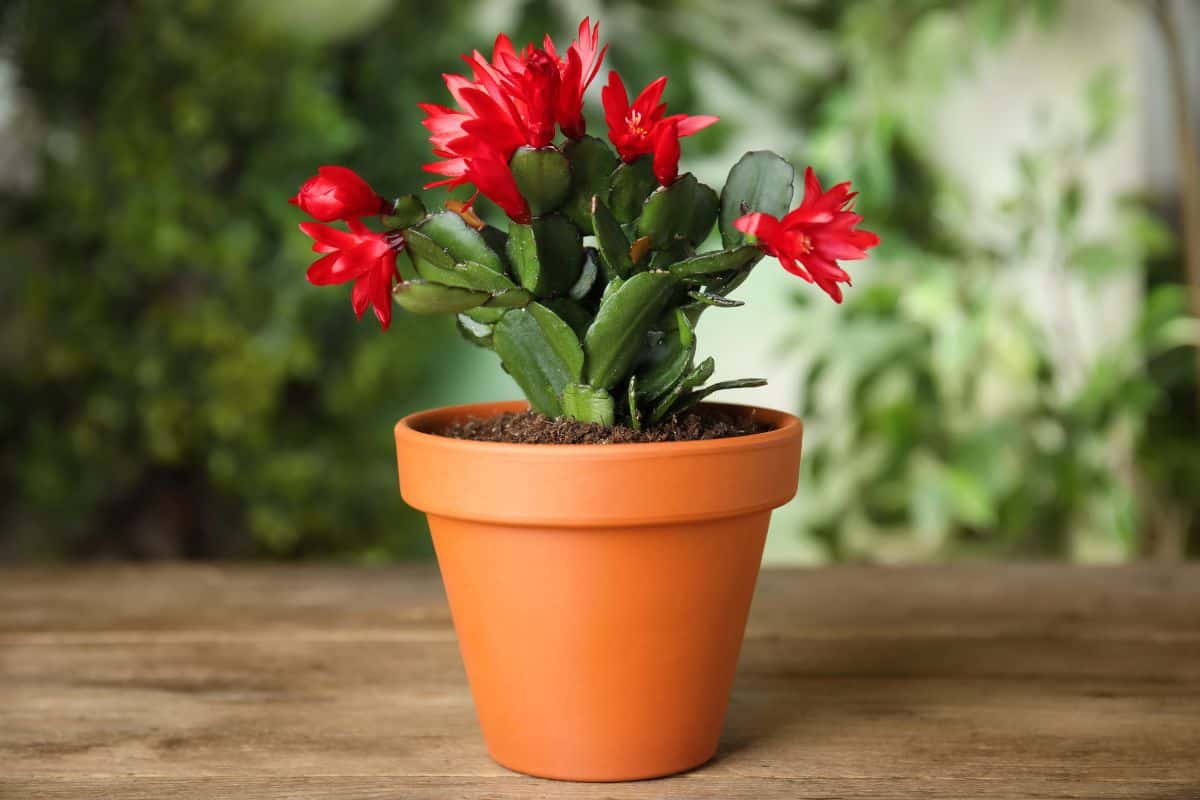
Christmas Cactus must be placed in the dark for 12 hours or more daily, two months before blooming, from the end of September to early October. The best spot is any area not exposed to any light.
Most Christmas Cactuses produce flowers once from November to January.
How To Take Care of Christmas Cactus
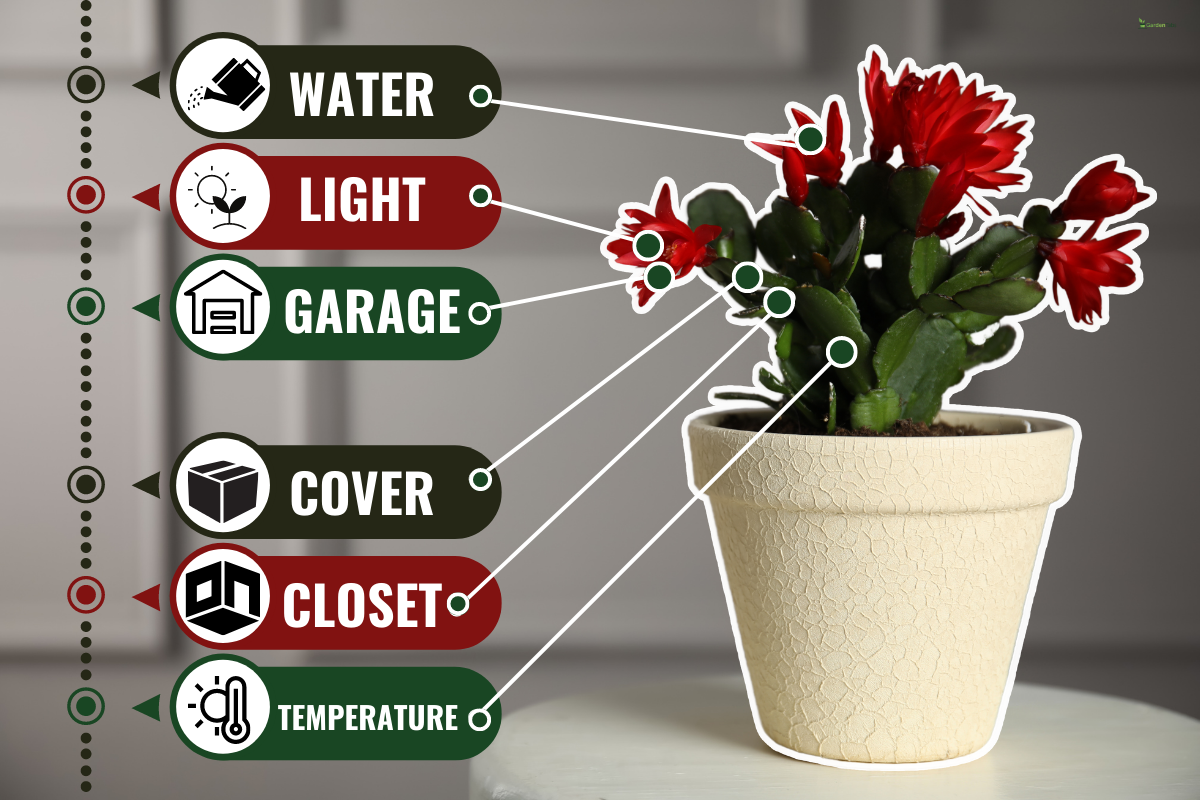
Some varieties get a second flowering end of winter under the right conditions. It would be best to learn how to care for the Christmas Cactus cycle to make the most out of your plant and makes it bloom.
Below are the conditions needed to make your plant bloom:
Water
Reduce watering during the fall season, from the end of October to early November. Water the top portion to make the plant dormant. Reducing water to a minimal amount is required for a Christmas Cactus to bloom.
Water the plant once every 2 to 3 weeks until the topsoil feels dry, up to 1/3 from the surface. Ensure that the pot has drainage holes. Place a tray underneath to catch the water. Remove the excess water from the tray.
Light
Christmas Cactuses require long hours of darkness, from 12 to 14 hours per day. Indirect light is okay in the daytime to promote bud growth.
These are the options to protect your Christmas Cactus from light:
Garage
The garage is an ideal spot to put your Christmas Cactus because most garages are dark. Place the cactus in the darkest corner. If your garage has windows, use a curtain to cover your plant to prevent the light from penetrating your room.
Cover
If the room you choose has windows and light comes in, you can use a box or a big bag to cover your plant. Ensure that the sides and top do not touch the plant.
Closet
The closet is one of the best parts of the house where you can place your plant. Ensure that you do not keep close and open the closet door to avoid interrupting total darkness for your Christmas Cactus.
Temperature
Keep the Christmas Cactus in a room at 50 to 60 degrees Fahrenheit. Too much exposure to sunlight or placing it in a room at 45 degrees Fahrenheit will start the budding process.
Do not leave the cactus to dry out too much because the buds may drop. However, losing buds during winter is normal because the bloom will grow back next year.
How Big Does A Christmas Cactus Grow?
A Christmas Cactus can grow from 1.5 to 6 feet tall. Although, the size depends on the variety of plants.
This plant is easy to grow and is an all-season plant. You may need to repot the plant if it is seated in the pot for some time and is too small for the roots to breathe.
Christmas Cactus likes clay pots with good drainage, and the roots are not fond of too much fertilizer in the soil. The ideal soil mix ratio is one part of sand into three parts of potting soil.
What Do You Feed Christmas Cactus?
Listed below are the recommended food to help your Christmas Cactus grow healthy:
Epsom Salt
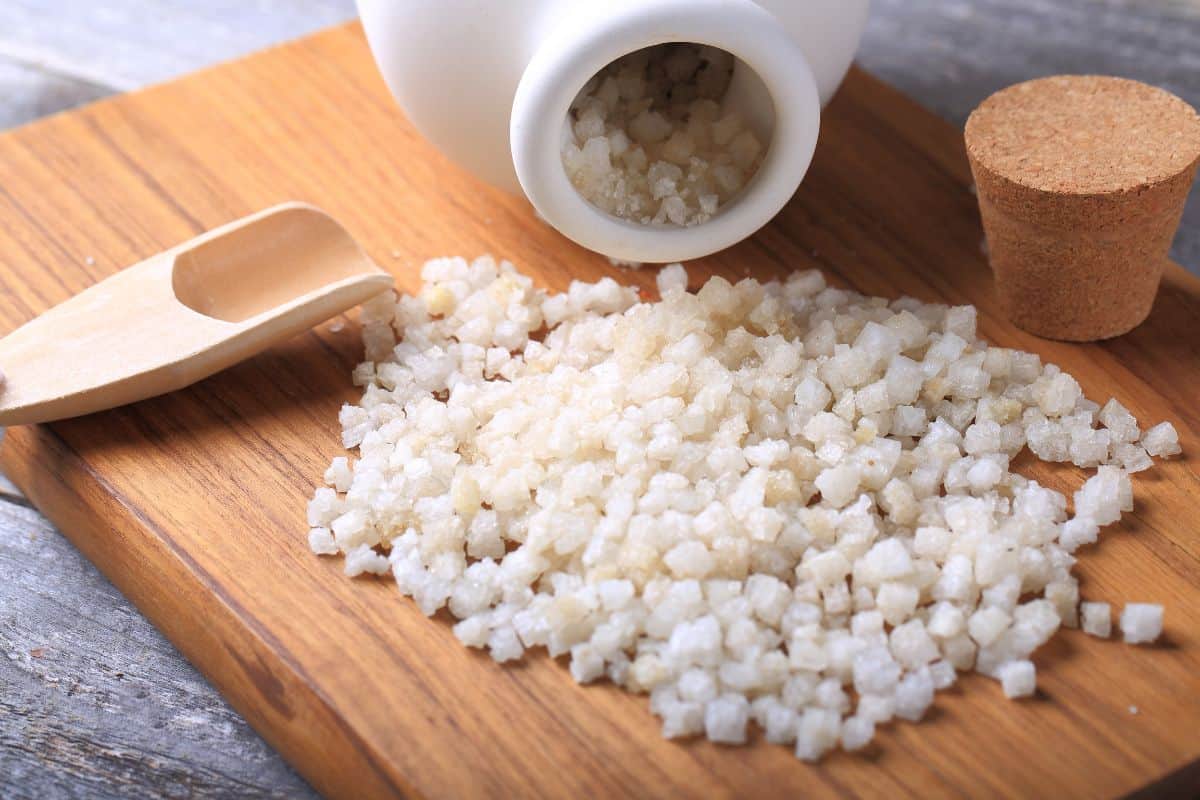
Epsom salt is a good source of magnesium to enhance the color of Christmas Cactus leaves and their flowering activity. It helps trap light for food production and promotes healthy growth.
Follow these steps in applying Epsom salt:
- Mix one teaspoon of salt with one gallon of water.
- Do not apply this solution if you feed your plant with other fertilizer in the same week.
- Avoid giving too much magnesium as it may lead to feeding burns.
Coffee Grounds
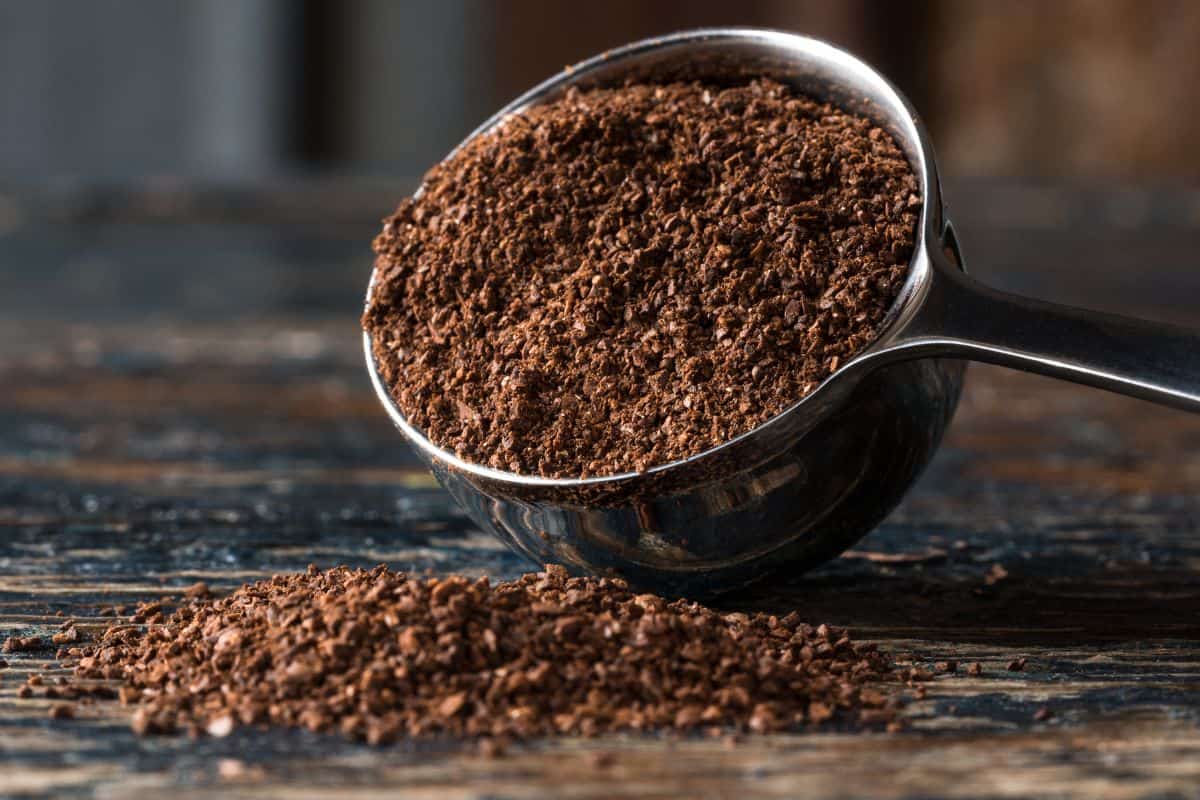
Coffee grounds are a good fertilizer for Christmas Cactus as they promote growth and bloom and are a good source of potassium and nitrogen.
Coffee grounds provide acid levels to the soil and hold a good amount of moisture. Avoid applying too much coffee grounds as they may lead to some issues. It is better to mix them with other materials before applying them to your plant.
These are ways to feed coffee grounds to the plant:
- You can add the coffee grounds to the compost to break down before using it for your Christmas Cactus.
- Mix the coffee grounds into the potting soil to boost growth and bloom.
- You can use coffee grounds as mulch around the base of your Christmas Cactus as it holds moisture.
Sugar

Sugar is a supplement used to feed plants. Glucose and fructose are sources of energy which is beneficial for plants.
How to prepare and feed your Christmas Cactus:
- Pour two tablespoons of sugar into one liter of boiling water and mix them thoroughly.
- Cool it down and leave for 2 to 3 hours.
- Feed your plant with this solution once a month.
Tea Infusion

Tea infusion helps Christmas Cactus blooms. Prepare the following for tea infusion:
- Pour a half-glass of tea leaves into 1,500 milliliters (1.5 gallons) of boiling water.
- Mix gradually until settled.
- Cool the water. mixture
- Infuse the water into the roots and alternate watering the plant with clean water.
How Often Should You Fertilize A Christmas Cactus To Bloom?
Fertilize the Christmas Cactus at least once a month during its growing season from spring to fall. Use a fertilizer with low nitrogen content to prevent producing more leaves than flowers.
What Are The Most Common Pests On Christmas cactus?
These are the known pests that can attack your Christmas Cactus:
Mealybugs

Mealybugs are annoying pests sometimes seen on indoor plants. These little bugs are easy to spot because of their cottony appearance. You can find them on the underside of leaves and stems.
Follow these steps to remove mealybugs:
- You can manually remove the bugs using a toothbrush or toothpick.
- Dip a cotton ball or buds into alcohol and wipe the bugs off the leaves. Just be mindful of using too much alcohol because it can burn leaves. You can try on one portion of a leaf first if it can cause burns.
- You may also use insecticides and spray on the infected parts.
Aphids
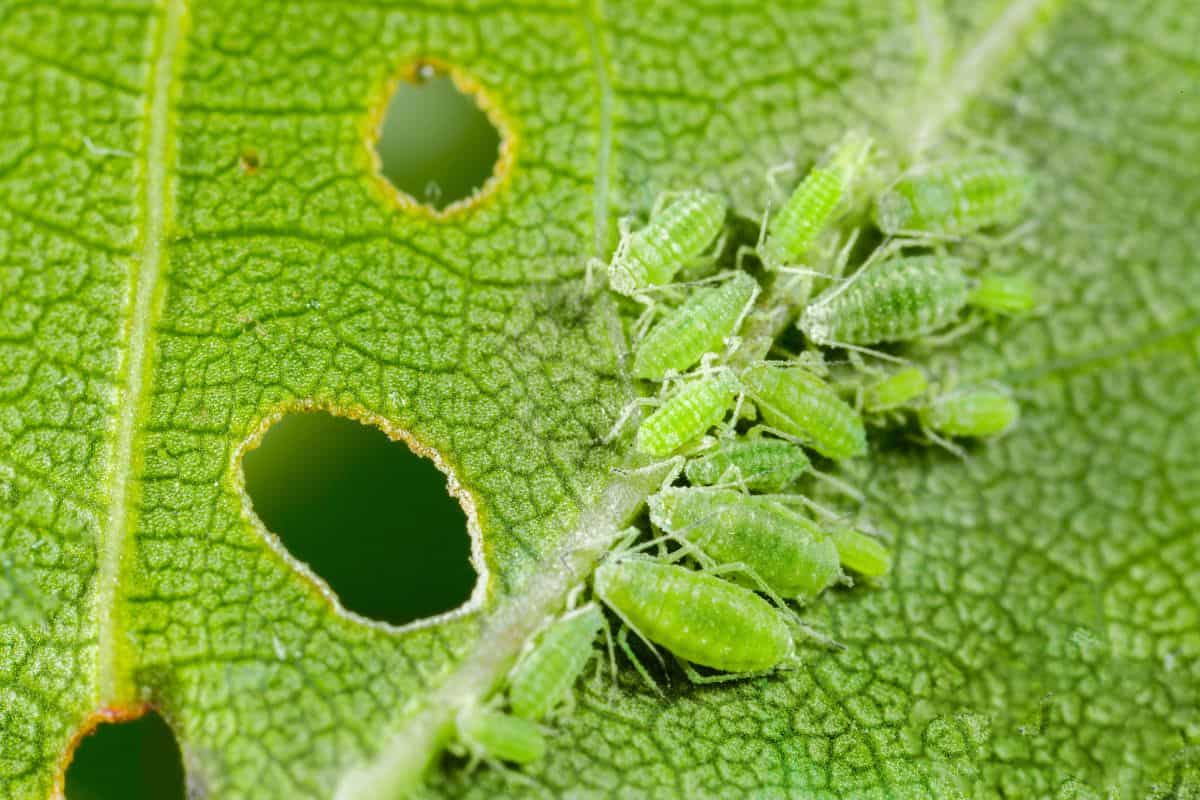
Aphids are soft-bodied insects that can ruin your plant. These pests come in different colors, such as brown, green, and black.
These aphids suck the sap, which can kill the plant. These insects can quickly reproduce and colonize your plant, so look for a possible infestation. You can spray insecticidal soap or neem oil to control aphids.
Fungus Gnats
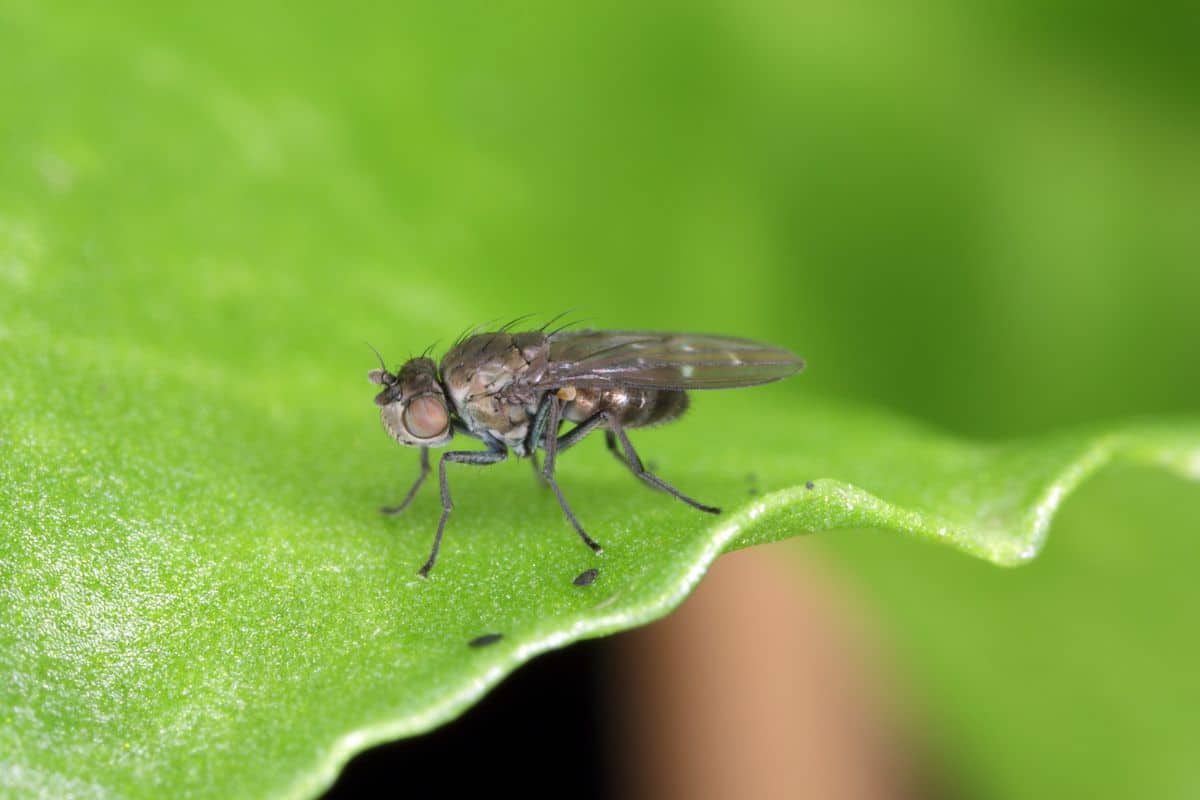
Fungus Gnats attack the Christmas Cactus and feed off from fungus caused by overwatering.
These tiny creatures love wet soil. Ensure that you use well-drained soil and that the pot has drainage holes to keep the potting soil from waterlogging and avoid creating a habitat for fungus gnats.
If infestations happen, dry the soil to kill larvae left in it before watering again, or repot your plant into new potting soil and dispose of the infested soil. Clean the roots first using tap water before replanting.
Thrips
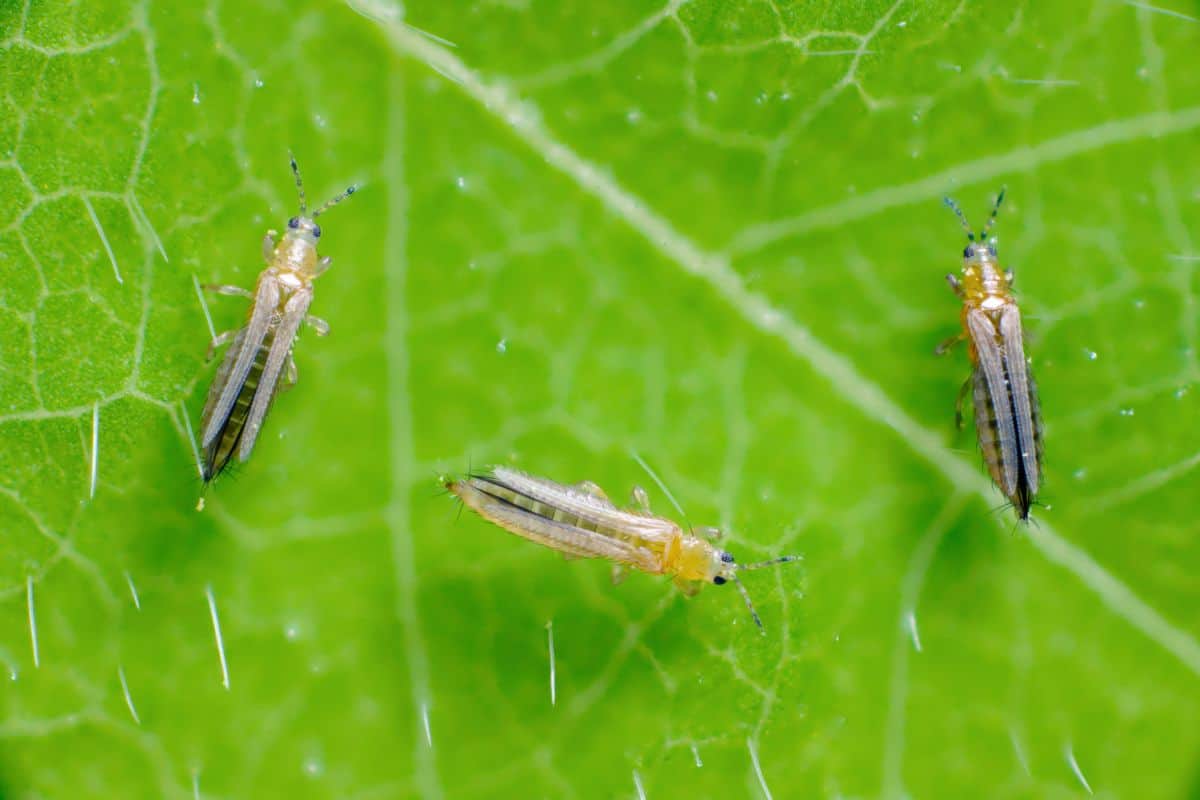
Thrips are yellowish or dark brown insects on foliage that cause tiny black dots. These pests' target is dry foliage. These infestations occur when the plant is outdoors during summer and then you place it indoors in fall.
Thrips can infest homes and attack humans. Although they don't pose threats like mosquitos, they could still be troublesome.
Here are the ways to remove thrips:
- Wash the leaves using flowing water under the sink or use a sprayer.
- Spray neem oil on the soil and leaves.
Click here to check neem oil on Amazon.
Red Spider Mites
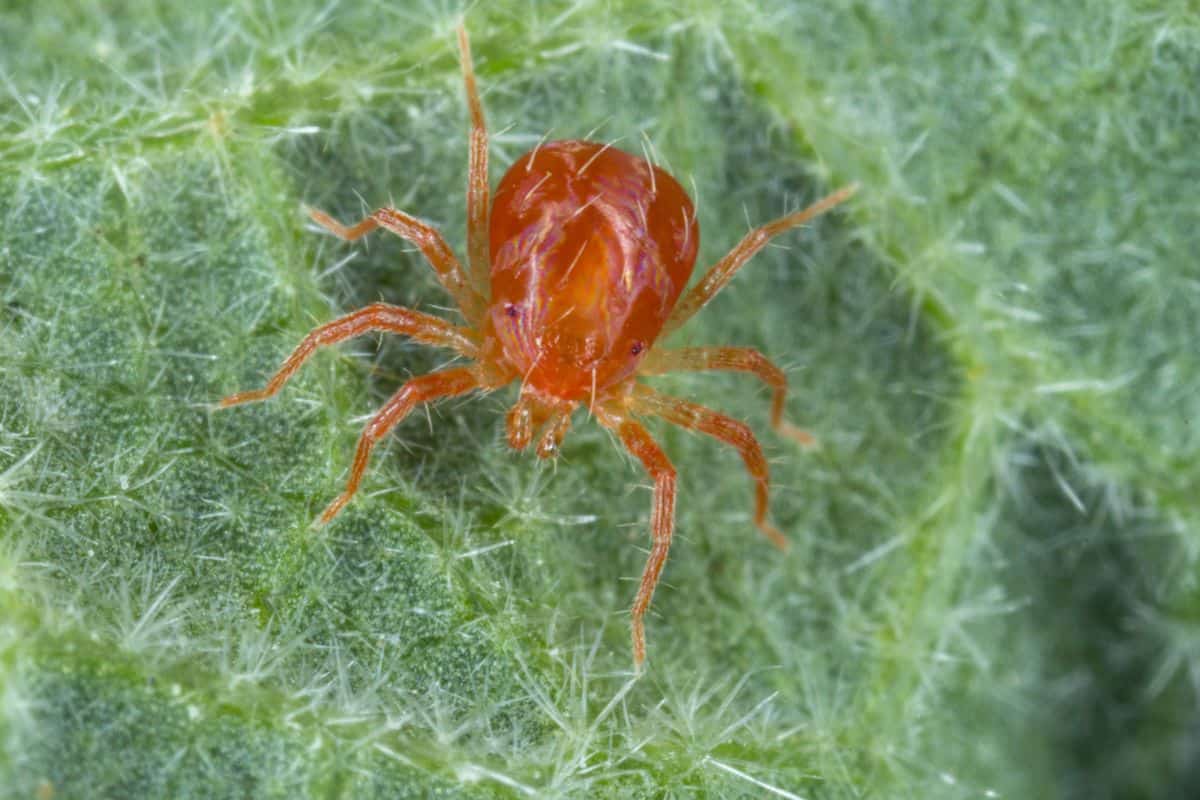
Red spider mites have eight legs that look like teeny reddish-orange dots, and these pests walk and spin webs on the leaves. You will notice discoloration on the stem segments of the plant. These mites suck the sap and give extreme damage to the foliage.
Here's how to get rid of red spider mites:
- Use a sprayer or wash the infested parts in the kitchen sink to remove as many pests as possible.
- Apply neem oil.
- Regularly rinse the plant or wipe the leaves with a damp cloth to prevent dust build-up.
Summary
We discussed when to place Christmas Cactus in the dark and what is the importance of doing so. We hope you learned from the discussion about growing Christmas Cactus in your home. For more helpful tips about gardening, please visit the posts below:
Insecticide Granules Vs. Spray; Which Is Best For Your Lawn & Garden?

